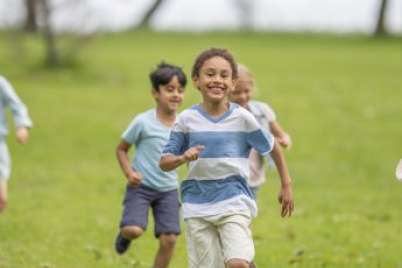
Why I’m adding loose parts play to my physical education program
Editor’s note: This post was updated Nov. 5, 2019.
Physical education (PE) and gym class are often used as synonyms. It’s an easy mistake to make because, stereotypically, many PE classes are all about playing sports in the gym. But the truth is the gymnasium is only one of the many locations used to teach physical education.
Doing PE differently
Sports are great and should be a part of the PE curriculum. At the same time, traditional sports aren’t for everyone. That’s why I’ve decided to add loose parts play to my physical education program. Loose parts play is an extra movement opportunity. Students use different material such as pots, pans, bins, wood, and string to build anything they can imagine. I’ve seen students create a mini-zipline, a restaurant, and a castle. During loose parts play, students move differently. They squat more, cross their midline to reach for objects, and develop fine motor skills.
Related read: Roundup of Canadian physical literacy programs in schools
Outdoor play
Children need outdoor play. It has many benefits that cannot be replicated in a gymnasium. When children are busy creating while playing with loose parts, they’re also improving their health by simply being outside and getting much-needed exposure to the natural elements. Most importantly, kids laugh and smile more when they’re outside.
Social skills
Instead of teaming up with their friends like they do when playing sports, I’ve noticed that students team up with each other based on interests. You’ll often see children who don’t usually play together end up building a castle because they need each other to complete the task. I really enjoy watching the students work together towards a common goal. They are continuously in action, collaborating, moving, and working hard.
Adding loose parts play to our PE programming was a success. It’ll be back next school year as a key pillar for our school’s wellness program.
A loose parts play program can be tailored to your school community’s need. Talk to your principal before starting a loose parts play program to find out what is acceptable in your school setting.
If you’re a parent who wants to ensure your child has opportunities for loose parts play at school, forward this article to his or her PE teacher or childcare provider.
David Benay has been a teacher and personal trainer since 2006. He has over 20 years of experience working with children as a camp counsellor, sports coach, personal trainer, and teacher. His Bike Across Canada Project in the Classroom is one of seven 2015-2016 winners of the CEA Ken Spencer Award for Innovation in Teaching and Learning.
Photo: Jeff Higgins





